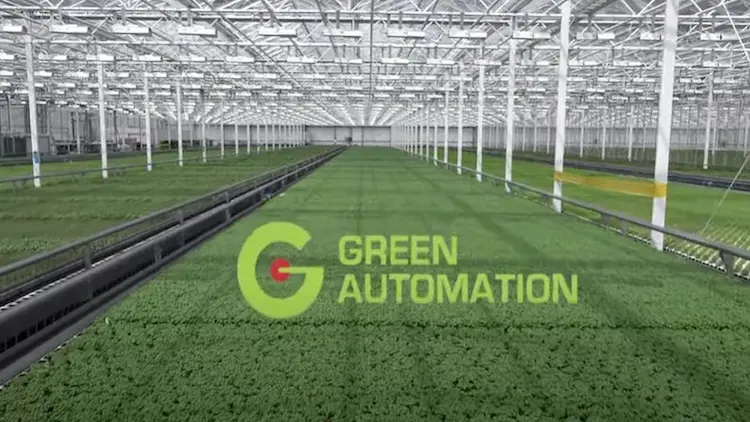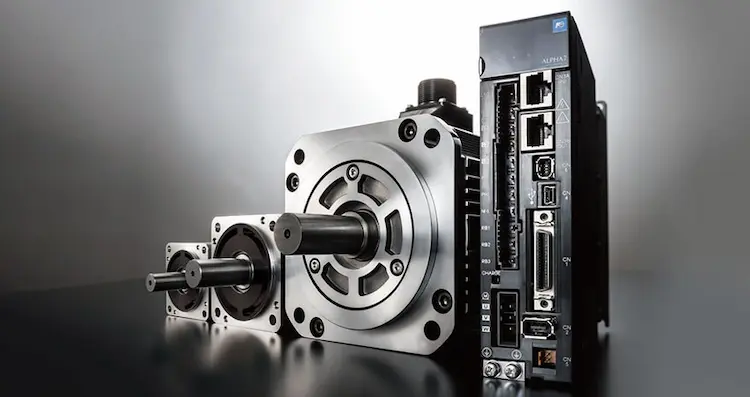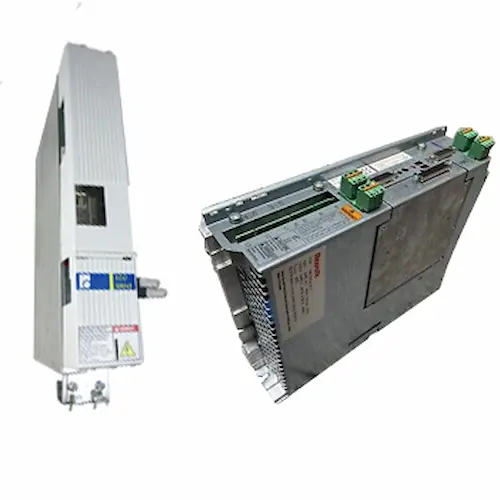Sustainability is at the forefront of modern industrial practices, and businesses are continually seeking ways to reduce their environmental footprint and energy costs. Green automation has emerged as a critical strategy in achieving these goals. One technology that plays a crucial role in this movement is servo drives.
This article looks at the green automation movement and how servo drives such as the Rexroth Indramat EcoDrive can contribute to energy efficiency in industrial applications.

Towards Green Automation
While industrial processes have traditionally been associated with high energy consumption and harmful emissions, green automation is rapidly gaining momentum. This paradigm shift emphasizes integrating sustainable practices into manufacturing and production systems. Beyond simply meeting regulatory standards—it strives to optimize energy usage, reduce waste, and minimize environmental impact.
The Role of Servo Drives
Servo drives are essential components in motion control systems, providing the precise and dynamic control required for various applications, from robotics and CNC machining to conveyor systems.
They convert electrical energy into mechanical motion with unparalleled accuracy and speed. Servo drives contribute significantly to the green automation movement by optimizing mechanical systems and improving energy efficiency.

Variable Speed Control:
One of the primary ways servo drives contribute to energy efficiency is through variable speed control. Unlike fixed-speed motors, servo drives adjust the speed and torque of the motor to match the load requirements in real time. This means that the motor only consumes the energy necessary to accomplish the task, reducing energy waste.
Regenerative Braking:
Many servo drives feature regenerative braking capabilities. This means that when the motor decelerates or stops, the excess kinetic energy is converted back into electrical energy and fed back into the power supply. This not only reduces energy consumption but also extends the lifespan of the servo-drive components.
Power Factor Correction:
Power factor correction is another energy-saving feature in modern servo drives. It optimizes the power factor of the drive, ensuring that the power drawn from the grid is used efficiently. This reduces reactive power, minimizes energy losses, and helps lower electricity costs.
Related Post: 10 Ways Businesses Can Be More Eco-Friendly
The Rexroth Indramat EcoDrive
Regarding energy-efficient servo drives, Rexroth Indramat EcoDrive components stand out as a prime example of cutting-edge technology in green automation. Developed by Bosch Rexroth, the EcoDrive is designed to meet the demands of modern industrial automation while minimizing environmental impact.

Here are some features that set it apart:
Highly Dynamic Operation:
The EcoDrive employs sophisticated control algorithms that optimize the operation of the servo drive and the connected motor. They allow systems to adjust their behavior, speed, or output to adapt to varying conditions or demands without losing accuracy and precision. The dynamic operation optimizes energy use and resource allocation, avoiding overuse of energy in parts of the system that are not actively working.
Digital Drive Concept:
The core of a digital drive concept is the use of digital technology to control and regulate the operation of electric motors. Digital control allows for precise and flexible adjustment of motor parameters and performance characteristics. Operators can continuously track energy consumption, motor performance, and other critical data in real time, identifying areas for improvement and implementing energy-saving measures.
Absolute or Incremental Position:
Incremental position detection is typically more energy-efficient due to its simplicity and reduced data transmission requirements. However, for instance, absolute position detection can offer energy efficiency advantages when using optical encoders to provide absolute position information. Choosing between the two options allows for flexibility in energy efficiency optimization.
Cost-Effective Direct Power Connection:
EcoDrive components are designed to connect directly to a power source quickly and affordably without needing expensive or complex intermediary parts or additional infrastructure. This approach can be advantageous where simplicity, reliability, and efficiency are essential.
Efficient Cooling:
The drive’s design also includes efficient cooling mechanisms to dissipate heat generated during operation. Keeping the drive components cool reduces energy losses due to heat, which can occur in less efficiently cooled systems.
Compatibility with High-Efficiency Motors:
The EcoDrive is often used in conjunction with high-efficiency motors designed to operate with minimal energy losses. When the EcoDrive combines these motors, the automation system can achieve even greater energy efficiency.
Real-World Benefits
In automotive manufacturing, where energy-intensive processes are the norm, the EcoDrive can help reduce energy consumption significantly with regenerative braking in robotic assembly lines, contributing to a greener production process. Similarly, in industries such as manufacturing, packaging, and material handling, the variable speed control of EcoDrive can lead to substantial energy savings by optimizing conveyor systems.
Precision and reliability are paramount in aerospace manufacturing, and the EcoDrive has played a vital role in achieving these standards. Manufacturers have reduced both their carbon footprint and operating costs by maximizing energy efficiency in CNC machining centers and robotic assembly.
Final Thoughts!
As industries worldwide embrace green automation, servo drives like the Rexroth Indramat EcoDrive are pivotal in pursuing energy efficiency and sustainability. With their powerful efficiency features, servo drives enable businesses to reduce their energy consumption and environmental impact while improving productivity and competitiveness.
So why not switch to a greener option in your industrial automation applications and enjoy the benefits to your bottom line and the environment?